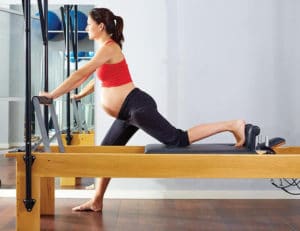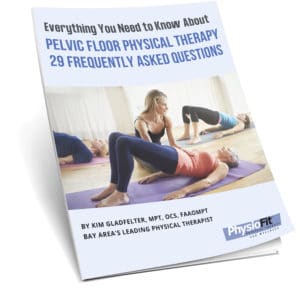
As many as one in four women has some sort of pelvic floor disorder, according to the National Institutes of Health, so it’s no wonder we’re seeing a lot of women experiencing uncomfortable issues such as urinary incontinence, fecal incontinence, and pelvic organ prolapse.
The risk of pelvic floor conditions increases due to factors such as a woman’s age and the number of pregnancies she’s had. But while pelvic muscle dysfunction is common – and certainly nothing to be embarrassed about – it’s not normal.
Fortunately, there are ways to heal the pelvic floor that don’t involve invasive procedures like surgery.
At our Los Altos clinic, pelvic floor issues are some of the most common reasons that pregnant and postpartum women come for help. And while men can struggle with pelvic floor issues, too, I’d like to discuss this common health concern in the context of new and expectant moms.
Meet the pelvic floor
Your pelvic floor is a group of muscles that literally form the “floor” of the pelvic cavity. These muscles are suspended across the pelvis – attached to the front, sides, and back of the pelvic ring. Their job is to help hold the pelvic organs in place, including the uterus, bladder, and bowels, as well as to provide stabilizing support for the spine.
During pregnancy, the growing weight of the baby increases strain on the pelvic muscles. This, along with normal hormonal changes in the body that promote tissue laxity, can cause the muscles to stretch out. Vaginal and cesarean deliveries can impact pelvic muscle function too, causing the pelvic floor and other core muscles to become weak, uncoordinated, or both.
Pelvic floor muscles don’t always bounce back on their own and return to their normal, pre-pregnancy state over time. Especially if you have a pre-existing dysfunction.
That’s where physical therapy comes in.
PT benefits
If you’re a mom with any of the following signs and symptoms of pelvic floor dysfunction, you could benefit from consulting with a pelvic floor physical therapist.
- Urinary incontinence (for example, leaking a little urine when you sneeze, laugh or pick something up)
- Fecal incontinence or constipation
- Pelvic organ prolapse (this can look or feel like something bulging into your vagina)
- Abdominal separation (diastasis recti)
- Pain during sex or while inserting a tampon
- Persistent lower back pain, vaginal pain, vulvar pain, or pelvic pain
Research shows that pelvic health physical therapy can alleviate these symptoms and help you regain better control and confidence in your body. Pelvic health physical therapy is part of the standard of care for postpartum moms in places like France. We want to make it available to all women.
My bottom line: If you’re pregnant, postpartum, or beyond, a physical therapist who specializes in pelvic health can help you uncover and address current pelvic floor dysfunction, as well as minimize or even avoid future problems.
Avoiding dysfunction
In addition to working with a specialized physical therapist, there are several things you can do to optimize pelvic health and avoid dysfunction after pregnancy. Here are my top tips:
- Learn good body mechanics. Poor posture and inefficient movement patterns can put extra strain on your pelvic muscles.
- Learn how to breathe properly. Your breath and core muscles, including the pelvic floor, are intricately connected. Breathing exercises can improve pelvic muscle coordination and strength.
- Stay active. Healing your pelvic floor goes beyond Kegel exercises. Staying active helps avoid back pain, maintain a healthy weight, reduce stress, boost mood, promote sleep and improve overall wellness. A pelvic health PT can help you figure out how to safely resume physical activity after your baby arrives.
Kim Gladfelter is the owner, physical therapist, and Pilates instructor at PhysioFit Physical Therapy & Wellness, 1000 Fremont Ave., Suite 108, Los Altos. For more information, call (650) 887-6046 or visit physiofitpt.com.
DOWNLOAD OUR FREE GUIDE: “Pelvic Floor Physical Therapy 29 Frequently Asked Questions.”
 ABOUT THE AUTHOR
ABOUT THE AUTHOR
Kim Gladfelter, MPT, OCS, FAAOMPT
Women's Health Physical Therapy Specialist at PhysioFit Physical Therapy & Wellness
Kim Gladfelter is a physical therapist, Pilates instructor, educator, author, and co-founder of PhysioFit Physical Therapy & Wellness. She is known as a keen, well-rounded expert of healing through movement and women’s health specialist in the Silicon Valley area.
Kim has helped men and women of all ages to stay active and feel their best. She also writes about managing pain in her health columns, blogs and the local Los Altos Town Crier newspaper as well as reaches out to the local community, support groups, schools, libraries, and sports centers to advise and educate on body awareness and therapeutic exercise.

 Los Altos, CA
Los Altos, CA

